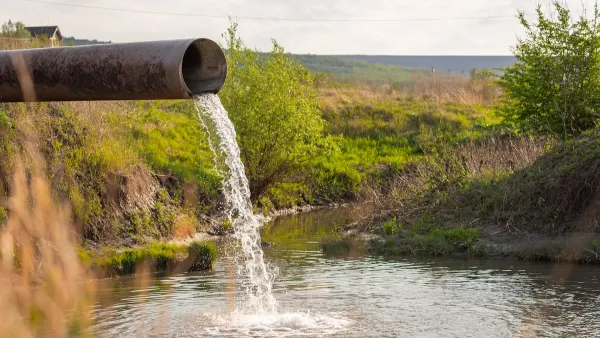The pressures on water supply are growing at the same time that water quality is becoming more expensive and more difficult to maintain. A recent article examines the challenges in the farm state of Nebraska.
“The costs of managing drinking-water quality are substantial and rising. The federal Environmental Protection Agency estimated last year that the nation may need to spend upwards of $380 billion in capital costs alone to upgrade its drinking water systems,” reports Daniel Snow and Peter Calow.
The article sites the example of Nebraska (a welcome break from the daunting and persistent drought narratives of California and Texas) in exemplifying the challenges to managing water supplies: “For Nebraska, there are three main pressures on water quality that are likely to resonate across the United States, especially in farm states: the ever-increasing intensification of agriculture in response to increasing demands for food; the increasing frequency of extreme weather events as climate changes; and an aging infrastructure of drinking-water and sewage-treatment systems.”
Snow and Calow also explain the danger, and who is likely to suffer the consequences, of shoe-horning simplistic solutions to the problem: “If treatment alone is viewed as the only solution, then costs are unfairly passed on to communities not responsible for the contamination. These costs can be particularly serious for small rural communities, where the technology required to remove both uranium and nitrate could cost as much as $5 million and require substantially increased operational costs.”
FULL STORY: The Rising Pressures on the Water We Drink

National Parks Layoffs Will Cause Communities to Lose Billions
Thousands of essential park workers were laid off this week, just before the busy spring break season.

Retro-silient?: America’s First “Eco-burb,” The Woodlands Turns 50
A master-planned community north of Houston offers lessons on green infrastructure and resilient design, but falls short of its founder’s lofty affordability and walkability goals.

Delivering for America Plan Will Downgrade Mail Service in at Least 49.5 Percent of Zip Codes
Republican and Democrat lawmakers criticize the plan for its disproportionate negative impact on rural communities.

Test News Post 1
This is a summary

Test News Headline 46
Test for the image on the front page.

Balancing Bombs and Butterflies: How the National Guard Protects a Rare Species
The National Guard at Fort Indiantown Gap uses GIS technology and land management strategies to balance military training with conservation efforts, ensuring the survival of the rare eastern regal fritillary butterfly.
Urban Design for Planners 1: Software Tools
This six-course series explores essential urban design concepts using open source software and equips planners with the tools they need to participate fully in the urban design process.
Planning for Universal Design
Learn the tools for implementing Universal Design in planning regulations.
EMC Planning Group, Inc.
Planetizen
Planetizen
Mpact (formerly Rail~Volution)
Great Falls Development Authority, Inc.
HUDs Office of Policy Development and Research
NYU Wagner Graduate School of Public Service





























